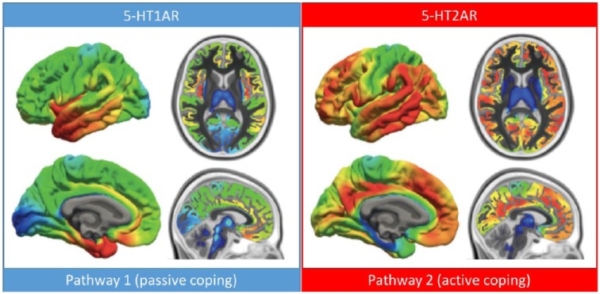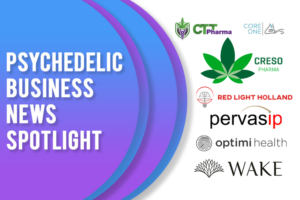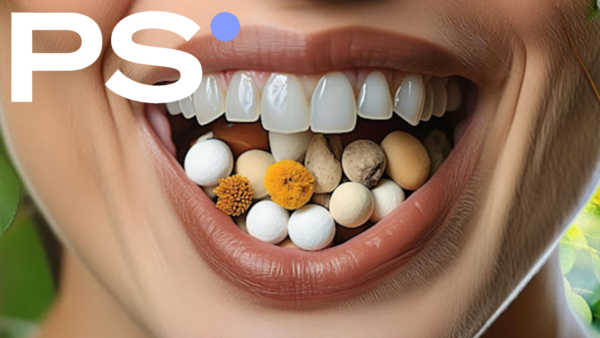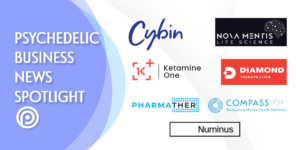
Microdosing is a trend that has gained tremendous popularity in recent years. Microdosing aims to enhance mood, creativity, productivity, and focus without experiencing full-blown hallucinations and altered states of consciousness. Microdosing is taking smaller-than-average recreational amounts of 1/5 to 1/20 of the standard dose with psychedelics. Typically, for a person who wants to integrate psychedelics into their lives without having to “trip balls,” reap the benefits, and increase their overall well-being, microdosing might be for you. Vital disparities make all the difference between a full dose and microdosing. This blog post aims to explore the latest research on psychedelic microdosing and answer the following questions:
- What does microdosing do to the mind and body?
- How can we minimize risk while microdosing?
- What does the science say about the future of microdosing?
What does microdosing do to the mind and body?
First, we must mention serotonin’s role in the relationship with consuming psychedelics. Serotonin is a neurotransmitter necessary for regulating mood, appetite, sleep, and social behavior. Psychedelic microdosing activates serotonin receptors’ which activate the parts of the brain for regulating mood, cognition, and perception. Psychedelics like LSD, psilocybin, and DMT simulate the agonist 5‐HT2A reception, which is part of the serotonin receptor family and triggers what we refer to as the “psychedelic experience.”

The specific mechanisms of psychedelic microdosing are still unclear. Nonetheless, some theories suggest that microdosing enhances neuroplasticity, the brain’s ability to reorganize and form new neural connections, by increasing the density and sports of synapses. Synapses are part of the circuit that connects sensory organs, like those that detect pain or touch, in the peripheral nervous system to the brain.
Recent studies have shown that psychedelic microdosing can modulate brain function in several ways, including:
- Increasing cortical excitability: Psychedelic microdosing can enhance cortical excitability, which refers to the ability of neurons to fire more efficiently and synchronously. This effect may improve cognitive functions such as attention, working memory, and problem-solving.
- Emotional processing: Psychedelic microdosing has the potential to provide insight into our lives and tap into emotional regions of the brain, like the amygdala and prefrontal cortex. A study suggests that psychedelics can improve emotional processing with mental health symptoms.
- Promote neurogenesis: Psychedelic drugs impact the birth of new neural connections through hippocampal neurogenesis. Hippocampal neurogenesis can affect the ability to learn and remember things more effectively and create new neural networks within the brain.
How can we minimize risk while microdosing?
Understanding how to minimize risks while taking psychedelics can improve our overall experience. Psychedelics have a complex and controversial history, and many individuals and communities remain skeptical of their potential benefits. By approaching microdosing with caution and respect, individuals can potentially contribute to a more significant cultural shift toward understanding and accepting the therapeutic properties of these substances. Additionally, responsible use can help to reduce the negative stereotypes and stigmas associated with psychedelic use, ultimately contributing to a more informed and open-minded approach toward these substances. By taking precautions and minimizing risks, individuals can help to promote safe and responsible psychedelic use and potentially pave the way for further research and exploration in this field. Here is a list of how to mitigate risk while microdosing:
- Start small. Taking psychedelics is not a race of how much I can take. It should be about learning from the medicine within. Starting slow is the most effective way to discover how much is enough. Starting with a small dose and gradually increasing over time, taking note of any adverse effects.
- Test your psychedelics. People sell drug testing kits online to ensure your drugs are safe and legitimate. The worst thing you can do to yourself is take laced drugs and wind up in the hospital—safety first!
- Do your research. Looking online and talking to people who have experienced microdosing can save you from a bad trip. The good thing is this article is a great first step. Weighing the pros and potential cons of psychedelics can assure you if it’s right for you.
- Take breaks. Allow your body and mind to recover from the medicine occasionally. There’s a constant online discussion on routines for microdosing and how much you should take. But, the best teacher is yourself and listening to your body.
What does the science say about the future of microdosing?

Microdosing psychedelics is a relatively new field of study. As it’s grown in popularity, research has boomed around psychedelics and their application towards mental health and well-being. Research has examined how psychedelics could potentially benefit various mental health conditions, including depression, anxiety, and PTSD. Here is a list of what science is saying about what microdosing can do for us:
Once the research is widespread and definite, people can trust that psychedelics can have healing potential, and more individuals may take part in microdosing to improve their lives. Despite these promising findings, there are still many unknowns about the safety and efficacy of microdosing, and much more research is needed before we can take more significant steps. Furthermore, the legal status of psychedelics makes it difficult for researchers to conduct large-scale studies, which can further hinder our understanding of this practice.
Lastly, as the stigma surrounding psychedelic use begins to lift and more researchers turn their attention to this field, we will likely continue to learn more about the potential benefits and risks of microdosing.
Psychedelic microdosing is emerging as a widespread practice in today’s age. There is a community of people who speak of its transformative benefits. Although, scientific research on its efficacy and safety is still limited. If you decide to try microdosing, it is crucial to do so safely and responsibly. It’s also essential to seek professional help if you have a pre-existing mental health condition to ensure it’s safe to consume psychedelics. The future of psychedelic microdosing is promising, and the growing interest in the therapeutic potential of psychedelics may lead to breakthroughs in mental health treatment.
Miles Perez is the founder and CEO of PSYCHSPACE, a platform focused on plant medicine and wellness practices for improving mental health.





